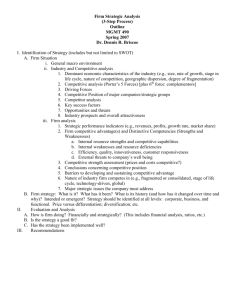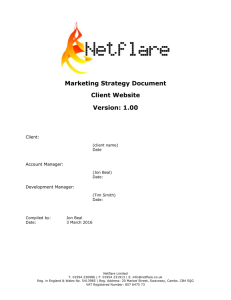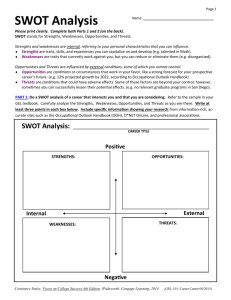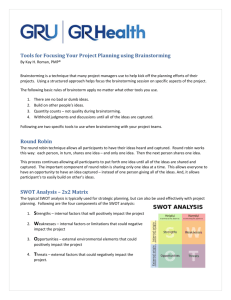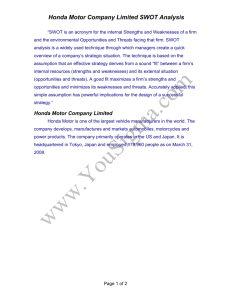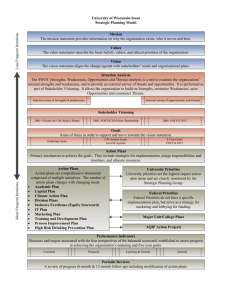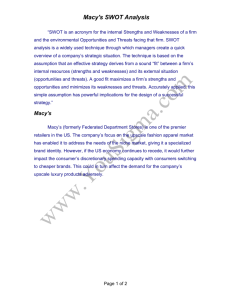SWOT Analysis Process - Sacramento City College
advertisement
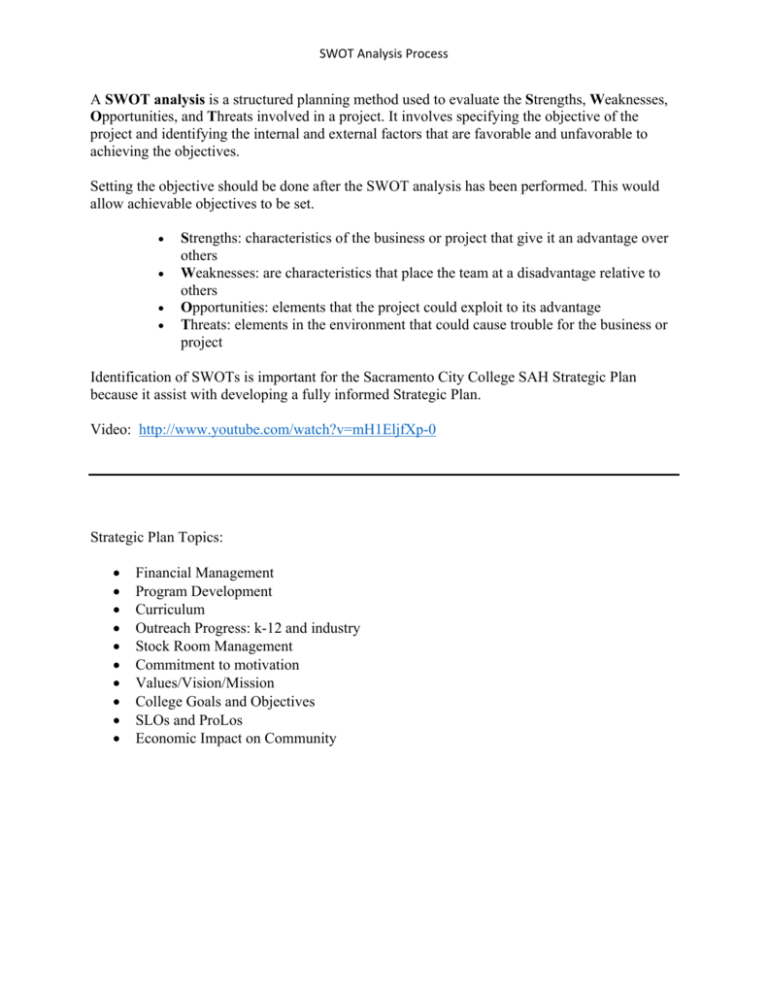
SWOT Analysis Process A SWOT analysis is a structured planning method used to evaluate the Strengths, Weaknesses, Opportunities, and Threats involved in a project. It involves specifying the objective of the project and identifying the internal and external factors that are favorable and unfavorable to achieving the objectives. Setting the objective should be done after the SWOT analysis has been performed. This would allow achievable objectives to be set. Strengths: characteristics of the business or project that give it an advantage over others Weaknesses: are characteristics that place the team at a disadvantage relative to others Opportunities: elements that the project could exploit to its advantage Threats: elements in the environment that could cause trouble for the business or project Identification of SWOTs is important for the Sacramento City College SAH Strategic Plan because it assist with developing a fully informed Strategic Plan. Video: http://www.youtube.com/watch?v=mH1EljfXp-0 Strategic Plan Topics: Financial Management Program Development Curriculum Outreach Progress: k-12 and industry Stock Room Management Commitment to motivation Values/Vision/Mission College Goals and Objectives SLOs and ProLos Economic Impact on Community SWOT Analysis Process strengths (internal) weaknesses (internal) strengths/opportunities obvious natural priorities weaknesses/opportunities potentially attractive options Likely to produce greatest ROI (Return Likely to produce good returns if capability On Investment) and implementation are viable. Likely to be quickest and easiest to implement. opportunities (external) threats (external) Probably justifying immediate action‐ planning or feasibility study. Potentially more exciting and stimulating and rewarding than S/O due to change, challenge, surprise tactics, and benefits from addressing and achieving improvements. Executive question: "If we are not already looking at these areas and prioritising them, then why not?" Executive questions: "What's actually stopping us doing these things, provided they truly fit strategically and are realistic and substantial?" strengths/threats easy to defend and counter weaknesses/threats potentially high risk Only basic awareness, planning, and implementation required to meet these challenges. Assessment of risk crucial. Where risk is low then we must ignore these issues and not be distracted by Investment in these issues is generally them. safe and necessary. Where risk is high we must assess Executive question: "Are we properly capability gaps and plan to defend/avert in informed and organized to deal with very specific controlled ways. these issues, and are we certain there Executive question: "Have we accurately are no hidden surprises?" ‐ and ‐ assessed the risks of these issues, and "Since we are strong here, can any of where the risks are high do we have these threats be turned into specific controlled reliable plans to opportunities?" avoid/avert/defend?"




